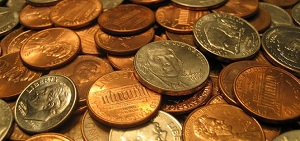 It is hard to imagine any concept that would be more important for understanding economics than the concept of capital. It is only natural that the economic system comprising free enterprise and private property is often referred to as capitalism.
It is hard to imagine any concept that would be more important for understanding economics than the concept of capital. It is only natural that the economic system comprising free enterprise and private property is often referred to as capitalism.
And it is surprising that such an important concept would be the subject of much controversy. Ever since the emergence of economics as a science in its own right different economists gave their own definitions of capital, included it into their theories, often giving almost diametrically opposite definitions of its role in the workings of economy.
The definition of capital, when reduced to bare minimum, would be ‘produced means of production’, that is, any form of wealth that can be employed to produce still more wealth. However, there is a distinction that is often overlooked by laymen – that of between financial capital and capital goods. Financial capital, e.g., of a business, is a sum of money that its owner will have if he or she sells all its assets and pays off all the liabilities. Capital goods, however, denote physical objects used in running the business, which cannot be expressed in numerical form. The confusion is further increased by the fact that economists often use the terms interchangeably.
Traditionally, economics differentiates between three different ways income is produced. These are rent, wages and interest. Rent is earned by landowner renting out land; wages are earned by workers selling their labor; interest is often defined as marginal product of capital.
However, it wouldn’t be an exaggeration to say that these definitions are somewhat out of date, for they don’t fit very well into the modern economic theories, most importantly, the price theory, according to which the boundaries of these categories are much more vague than it was previously considered.
For example, rent generated by property can easily be reduced to interest generated by investment – for property owner implicitly invests the property’s value by keeping the property instead of selling it, and gets a return on investment in the form of rent.
The very definition of interest as marginal product of capital doesn’t seem too accurate as well, for it mixes up financial capital with physical capital goods. And doing so it omits several important factors. For example, we may calculate the changes in incomes of a firm that rents additional physical goods; but in order to find out the interest rate of this acquisition we have to know the market price of these capital goods. Depending on the price, the interest rate may vary; moreover, it may fluctuate over time, which brings additional difficulties. Thus, the correlation between the productivity of capital and interest rate is not completely identical to that between productivity of labor and wage rate.
All in all, despite its importance for the understanding of economic theory, the concept of capital so far received woefully inadequate amount of attention from scholars. Current economic theories tend to apply simplifications that, while making analysis easier, do not take into account inhomogeneous character of capital.